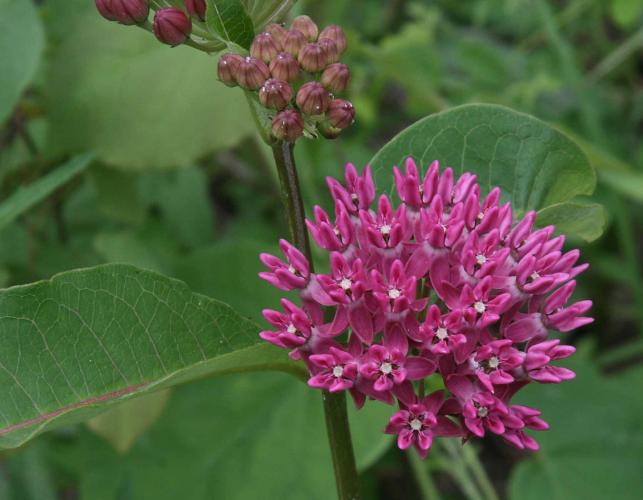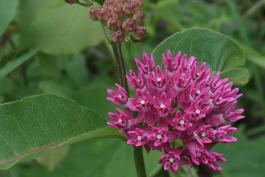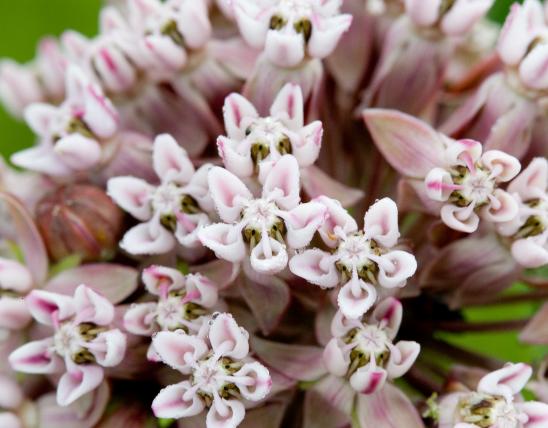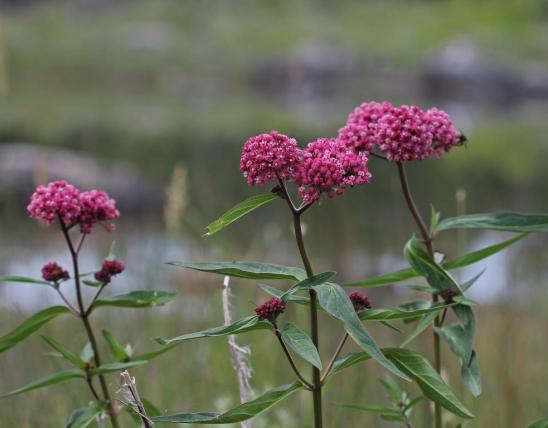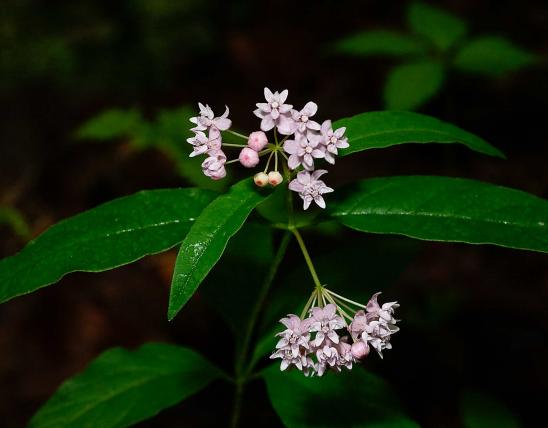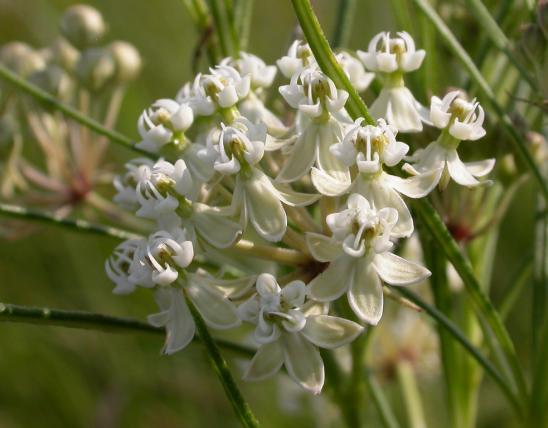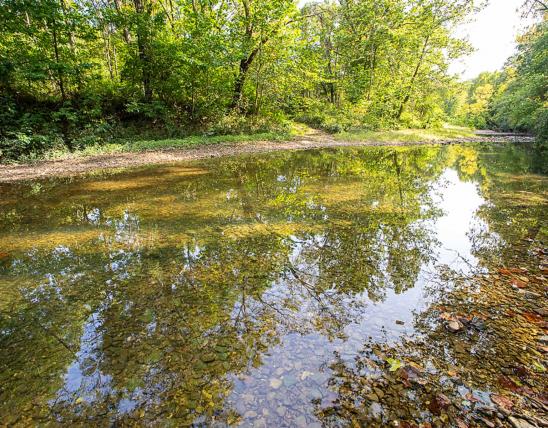
Slender perennial with flowers in the form typical of milkweeds, borne in umbels (rounded clusters), usually on stout, single stalks; pale purple to reddish purple to dark purple, with greenish or red tints. Clusters typically begin rather pale and greenish; the purplish color deepens and intensifies with time. Blooms May–July. Leaves opposite, broad, ovate, pointed at both ends, to 6 inches long, with fine down on underside, on very short stalks. Fruit relatively narrow seedpods, to 6 inches long, with numerous, tightly packed seeds, released and windborne on silky floss.
Similar species: Common milkweed (A. syriaca) has paler flower clusters that arise more often from leaf axils along the stalk instead of from the top of the stem; its seed pods are covered with soft prickles instead of being smooth on the outside.
Height: to 3 feet.

Scattered statewide.
Habitat and Conservation
Occurs in upland prairies, glades, savannas, tops of bluffs, upland forests, and less commonly banks of streams; also pastures, roadsides, railroads, and open, disturbed areas. Where they occur together, purple milkweed might hybridize with common milkweed (S. syriaca).
Status
The entire former milkweed family (Asclepiadaceae) has recently been rolled into the dogbane family (Apocynaceae). For many years, botanists have known the two families were closely related. The milkweed group, with its distinct floral structures, is still considered a unique subfamily or tribe of the dogbane family. As you consult various sources, you can expect to see milkweeds grouped in either family.
Human Connections
Milkweeds have a long list of historical medicinal uses, and the milky sap (latex) was once explored as a potential source of rubber. The silky floss of the seedpods has been used for stuffing pillows and life preservers. With proper preparation, young shoots of the plant can be eaten.
Ecosystem Connections
Many bees, butterflies, and skippers drink nectar from the flowers, and crab spiders often hide in the clusters, hunting them. Monarch butterflies use milkweeds as larval food plants, collecting the sap's toxic cardiac gycosides in their bodies and becoming unpalatable to predators.
